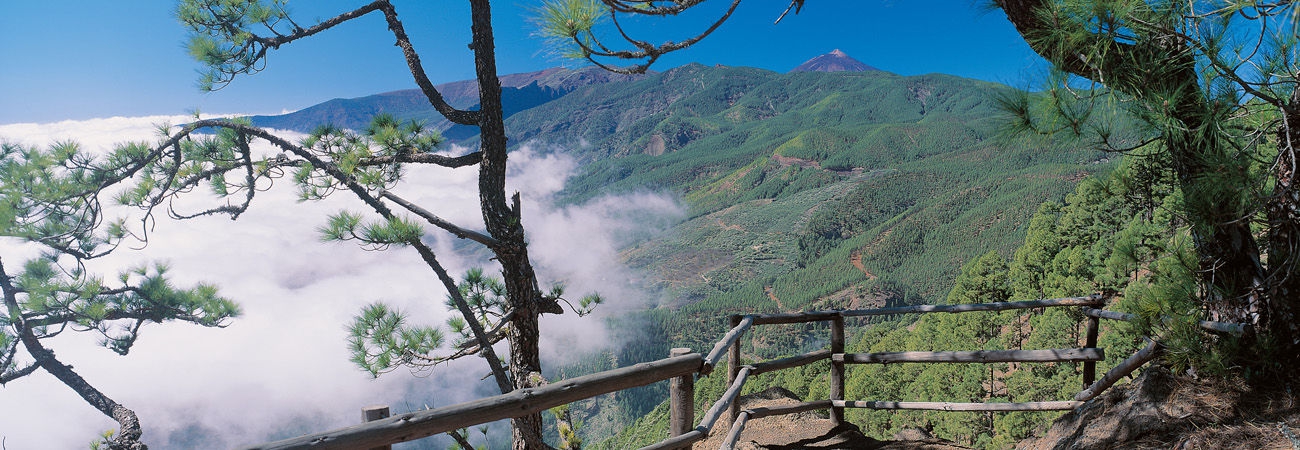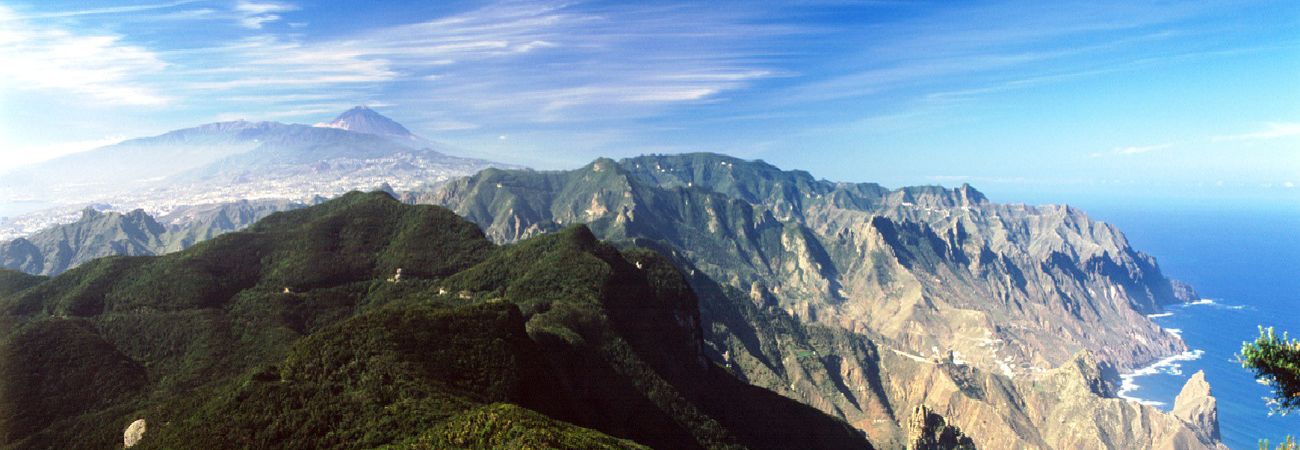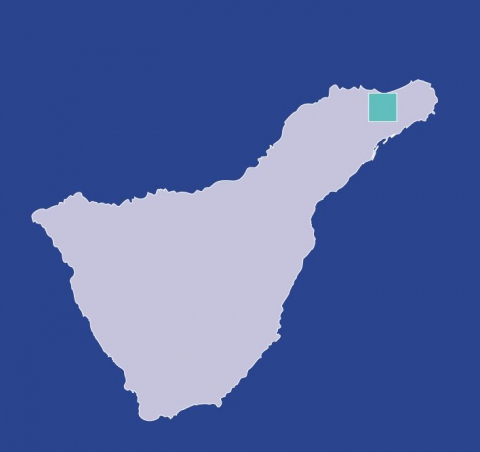Las Vueltas - Taganana
The path of Las Vueltas used to be, until very recently, the only way of access between Taganana and Santa Cruz and La Laguna. The track starts left of the Casa Forestal (1), on the TF-12 at a place known as "Casas de Las Cumbres" along a stepped unpaved path. It goes up through a thick mass of vegetation (mainly tree-heath and wax-myrtle) towards a cave on the right hand side.
From here, it starts coming down through a growing mass of laurel forest and you will find natural springs as well. Here and there you will see traces of the original cobblestones along the famous bends (according to tradition, as many as the days of the year). The vegetation then starts becoming more scarce and one you may now admire beautiful views of the coastline. The cobblestones become clearer and there are some stone walls and terraced fields, some of which are abandoned and others still grow potatoes and grapevines.
The track crosses the Carretera de los Naranjos and after some yards on the left it gets into a cobblestoned path ending in the "barrio de Portugal" (Portugal district), in Taganana, extremely interesting for the traditional architecture and for its history (2), being probably the first European settlement in the area after the conquest of the island.
Interesting details
Las Vueltas - Taganana

Flora
Canary Islands Ebony (Persea Indica), Canarian Laurel (Laurus Azorica).
Values
Fauna: two kinds of wild pigeons, called "turqué" (Bolle pigeon) and "rabiche" (Pigeon of the Laurel Forests).
Heritage
Hermitage of Nuestra Señora del Carmen (19th c.) Information centre Cruz del Carmen
Protection
Inside the Rural Park of Anaga Useful telephone numbers Rural Park Informatión Centre 922 633 576 La Laguna Local Police 922 601 175 Red Cross 922 259 626 - 922 281 800 City/Highway Police 922 259 416 TITSA (Bus company) 922 531 300
Route details
| Position | Borough of Santa Cruz de Tenerife |
|---|---|
| Start point | TF-1124 (Casa forestal) |
| End point | Taganana |
| Distance | 4,5 Km. |
| Duration | 2 h. 30 min. |
| Difficulty | Medium |
| Accessibility | TITSA bus routes |









